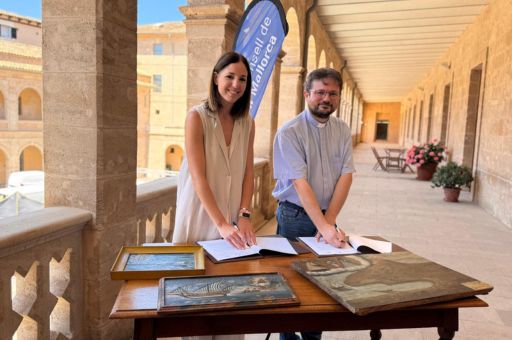A new agreement will allow the public to view rarely seen religious artworks as part of the museum’s upcoming permanent exhibition project.
A new collaboration between the Diocese of Mallorca and local cultural authorities will make it possible to temporarily display a collection of maritime-themed votive altarpieces at the Museu Marítim de Mallorca. These religious works, traditionally hidden from public view, hold significant historical and symbolic value and will now be accessible to all as part of a renewed museum narrative.
Antònia Roca, Vice President and Councillor for Culture and Heritage, explained that this agreement is part of a larger museum development project underway at the Museu Marítim in Palma:
“For the first time in its history, the museum will have its own curated exhibition plan,” she stated. “Once this project is complete, the museum will reopen its Ses Voltes location to the public, after months of closure due to safety concerns.”
TDB keeps you informed. Follow us on: Facebook, Twitter and Instagram
Historic Maritime-Themed Altarpieces to Be Exhibited at the Museu Marítim de Mallorca
The altarpieces, also known as ex-votos, are small-format devotional paintings created as offerings of thanks for survival at sea, whether from storms, pirate attacks, or other dangers. Most of these works date back to the 18th and 19th centuries and prominently feature the Virgin of Puig de Pollença, a spiritual figure long invoked by seafarers in moments of peril.
In addition to the initial collection, the Diocese of Mallorca will loan three new altarpieces each year to the Consorci Museu Marítim de Mallorca, in a rotating system that will keep the exhibition content dynamic and evolving. The first three pieces, from the Santuario del Puig de Maria in Pollença, will be on display during the museum’s first year after reopening.
Councillor Roca emphasised the cultural and emotional importance of this initiative:
“This collaboration marks a major milestone, allowing religious and popular heritage from the island to become part of the contemporary museum discourse. These altarpieces are not just works of art—they are witnesses of faith, the sea, and the people. They connect us to the maritime and devout Mallorca of our ancestors.”
